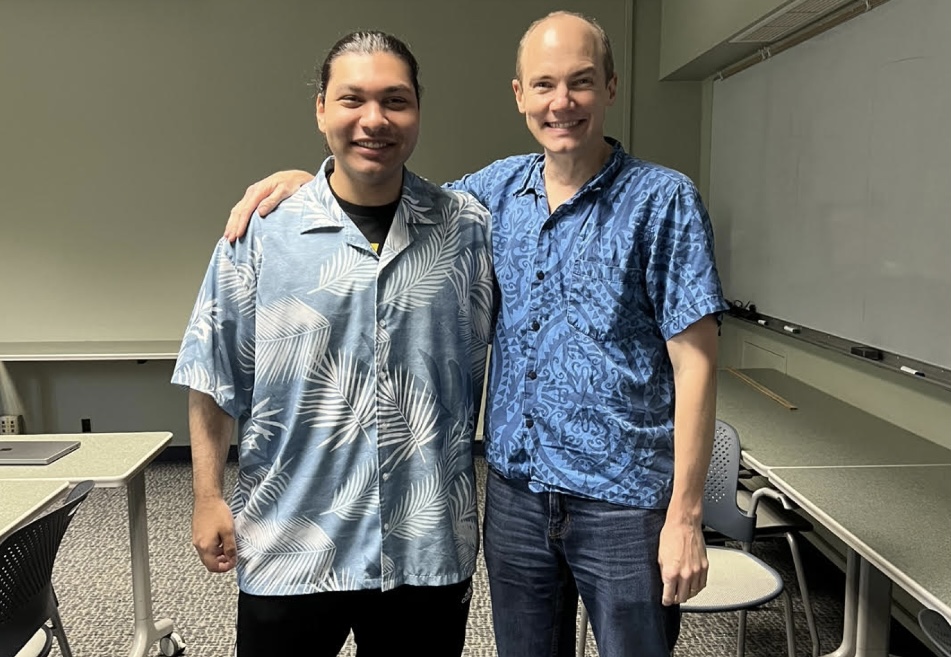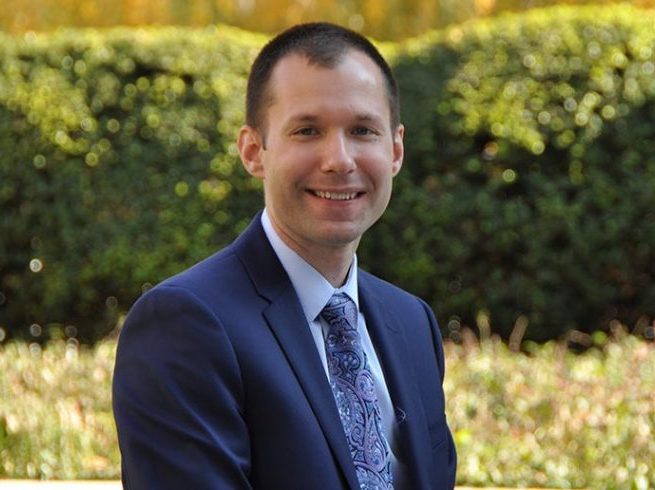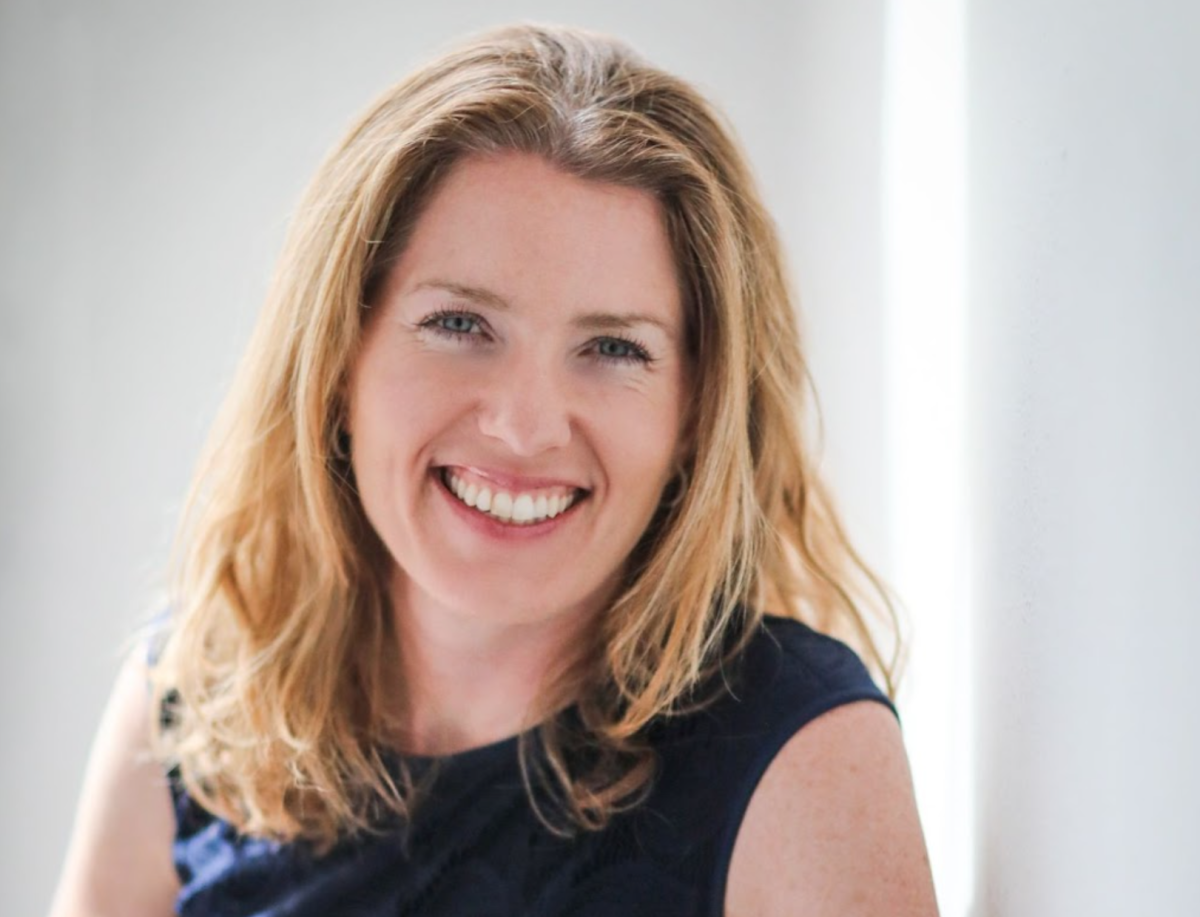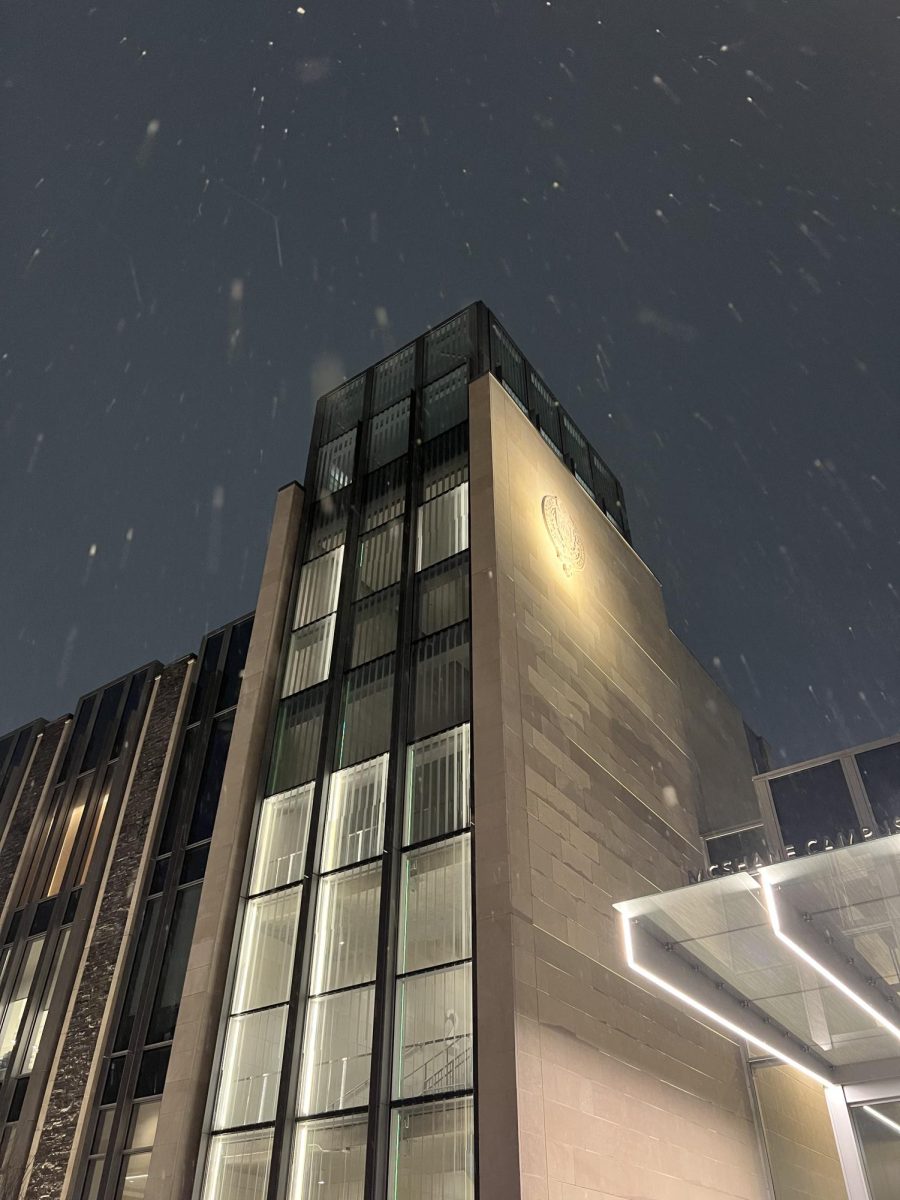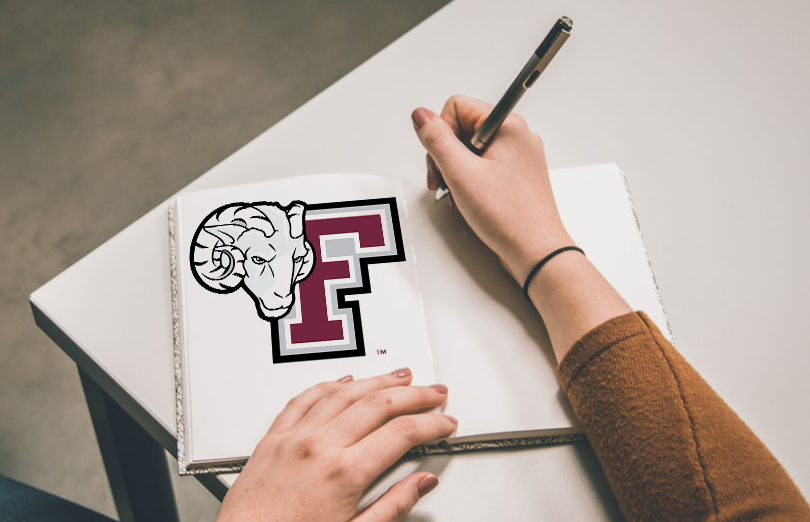Fordham doesn’t have data on how many fifth-years are enrolled in its nine schools spread across five campuses, but Benjamin Coco, FCRH ’23/’24, said he is willing to bet his lucky stars that he’s the only one in the Ram universe who’s studying the secrets of the cosmos.
The Brooklyn native is a fifth-year “Super Senior,” a simultaneous past and future graduate of the classes of ’23 and ’24 who’s continuing his dual majors in physics and English with a creative writing concentration. “My heart belongs more to the class of ’23,” he said, though he said he gratefully acknowledges his appreciation for the Fordham Founder’s Scholarship, which has enabled him to remain at FCRH for one more year.
Coco has been involved in research at Fordham since the start of his junior year, but most recently traveled to Notre Dame University in Notre Dame, Ind., where he participated in a Research Experience for Undergraduates (REU) given by the Nation Science Foundation. REUs are competitive summer-long programs that prioritize admission to students from smaller schools with less robust research opportunities compared to the rest of the nation — such as Fordham, which doesn’t offer fields as specific as Coco’s Astrophysics aspirations. Coco said the inspiration for him to apply to Notre Dame’s REU came in a dream, and after three years of applications of near-success, he finally joined 2% of candidates accepted to the summer 2023 season. “This year was the year I finally got my golden ticket,” Coco said.
At Notre Dame, where he was one of only 23 students accepted from around the world, Coco studied galactic archaeology. Known for being the research field that studies the formative origins of the Milky Way Galaxy, Coco applied it to scrutinize globular clusters — regions of space that have a high density of stars. “My research over the summer analyzed Globular Cluster M15 to seek and find the origins of neutron-capture elements,” Coco explained. “We wanted to either confirm this relationship or learn that Globular Cluster formation is unique to each Globular Cluster.” With the present knowledge that elements of the periodic table with an atomic weight up to that of iron can be formed by stars, Coco set out to determine the possibility of any of those heavier than iron — neutron-captures — appearing in stars as well. “The heavier elements are known as neutron-capture-elements and currently only have one confirmed source: Binary-Neutron Star Mergers,” Coco said. He built on the published work of his summer advisor, Dr. Evan Kirby, who in a recent paper to The Astrophysical Journal detailed the identification of a relationship in Globular Cluster M92 demonstrating the likelihood of a secondary source of neutron-capture elements. “Using data collected by the Keck Observatory in Waimea, Hawaii, our tentative results show a different relationship in M15 which indicates that Globular Clusters form differently across the Milky Way,” said Coco. “By studying different Globular Clusters, we can gain unique puzzle pieces of information about how our galaxy formed.”
Coco presented his research at a seminar on Sept. 20. Hosted as a colloquium by the building’s physics department, he shared his astrophysics work and REU experiences over the summer. “My best friend thought I was examining fossilized stars; others think I’m studying moon rocks,” Coco said, laughing. 10 days later, he did the same in a Zoom presentation for the Virtual REU Conference, where he communicated and mutually learned with students who’d participated in REUs across the nation. “My guiding philosophy for the summer was to take advantage of every opportunity that came in front of me,” Coco said. “Taking part in the conference was a wonderful opportunity that connected me to interesting research and potential peers in my grad program.”
Coco’s desire to pursue his Ph.D. was strengthened by his time at Notre Dame, but he credits his Fordham roots. Along with the physics department’s Professor John Cunningham, Ph.D., S.J., David Brown Ph.D., S.J., Christopher Aubin, Ph.D. and Vassilios Fessatidis, Ph.D., Coco modernized the data processing pipeline of the The Vatican Advanced Technology Telescope of the Vatican Observatory in Safford, Ariz. Coco’s earliest studies focused on Red Giants, “dying” stars which have depleted their core’s hydrogen and are undergoing thermonuclear fusion, where the heat and force of colliding light atomic nuclei release massive quantities of energy. He harnessed emission spectroscopy, a pre-quantum mechanics technique measuring the wavelengths of photons emitted by atoms during their transition from an excited state to a lower energy state to ascertain the levels of different chemicals and trace elements in celestial bodies. Coco specifically derived the intensity of light emitted from stars at a particular wavelength to determine the percentages of alpha-peak elements and thus the age of a star, and created a Python code for future Vatican projects.
“For as long as I can remember, I wanted to study the infinite sandbox of possibility that makes up the cosmos, and was always encouraged by grandparents, especially my grandpa,” Coco said. “My only regret in pursuing research and making discoveries is that he isn’t here for me to share those with him anymore, but I’ll always be grateful to him and my grandma for helping foster my love of space. Through my work, I continue to cherish his memory, and treasure the time I have left with my grandma.”
“This summer I made extraordinary friendships with people from around the world,” Coco said, “and I’m fortunate to know that the friendships formed in the REU, combined with connections throughout my years at Fordham, will last for a lifetime.”





































































































































































































